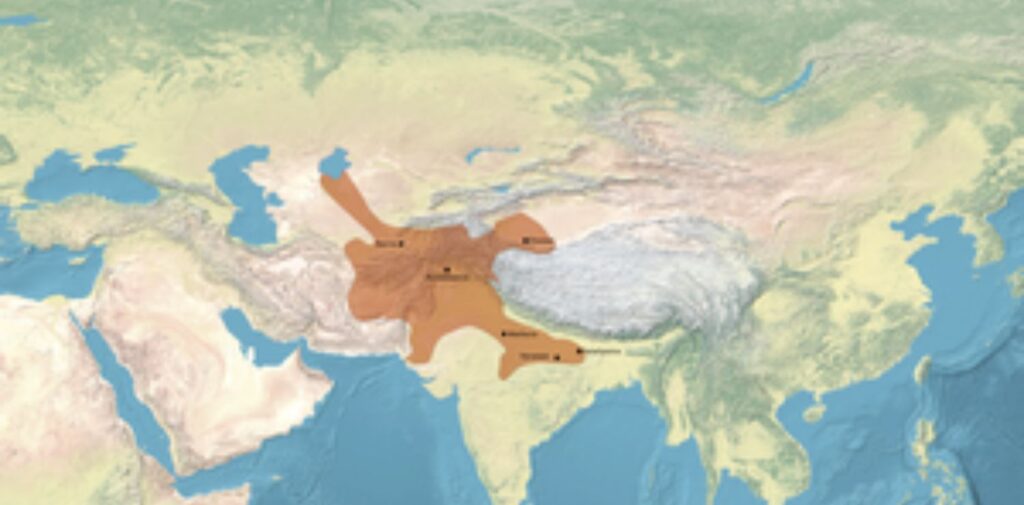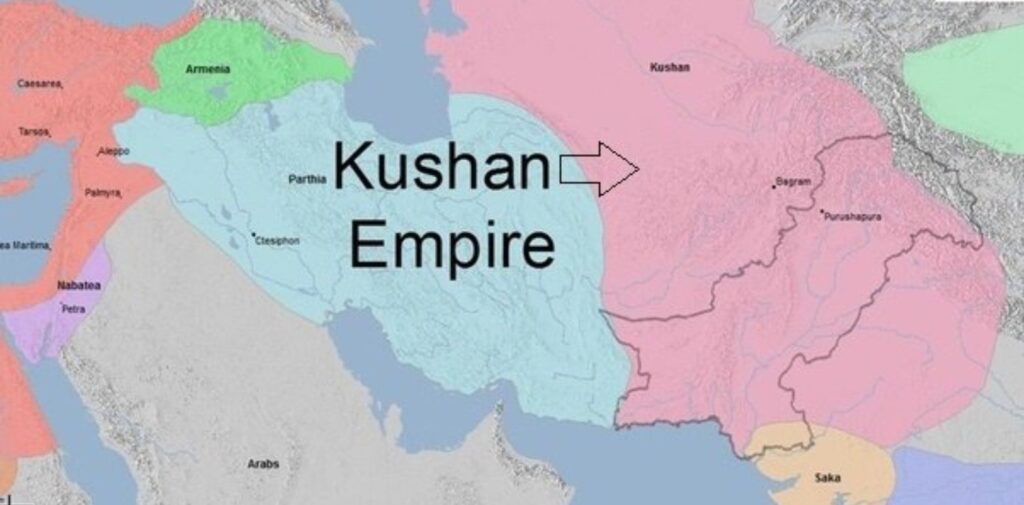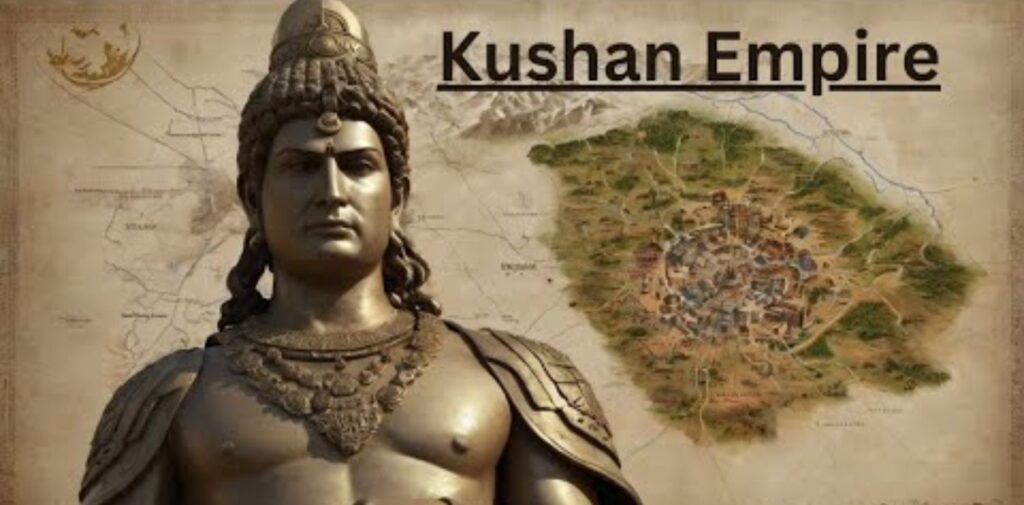The Kushan Empire, one of the most important and influential ancient civilizations, flourished in the heart of Asia more than 2,000 years ago. It was a time when trade routes connected the East to the West, and diverse cultures, languages, and religions interacted. From the rich lands of Central Asia to the bustling cities of India and beyond, the Kushan Empire played a significant role in shaping the course of history. But like many empires before and after it, the Kushan Empire rose to glory only to eventually crumble. To understand the Kushan Empire, it’s crucial to look at its origins, rise, golden age, and eventual decline, and how it influenced the world.
Origins of the Kushan Empire
The story of the Kushan Empire begins with the Kushan people, originally a tribe from the nomadic Yuezhi group in Central Asia. These people lived in the vast steppes of what is now the area around modern-day China, Kazakhstan, and Uzbekistan. Their ancestors were part of a larger group of Indo-European-speaking nomads who had migrated southward from the northern regions over centuries.

Around the 1st century BCE, the Yuezhi people faced pressure from the Xiongnu Empire, a powerful force in the region. In response to this, the Yuezhi migrated southward to the area known as Bactria, which today includes parts of Afghanistan, Pakistan, and northern India. The Yuezhi eventually defeated the Greco-Bactrian kingdom and established their own rule. This marked the birth of the Kushan Empire, named after the Kushan tribe that led the new kingdom.
The Rise of the Kushan Empire
The rise of the Kushan Empire is attributed to the leadership of a ruler named Kujula Kadphises, who is thought to have reigned around 30 CE. Under his rule, the Kushans not only consolidated power in the region but also expanded their territory to include much of northern India and Central Asia. His military conquests were key to establishing the foundations of the empire.
Kujula Kadphises’s successors, particularly his son Vima Kadphises and later Kanishka, further expanded the empire’s borders and influence. Vima Kadphises, for example, is credited with bringing the rich lands of northwestern India under Kushan control. But it was under the rule of Emperor Kanishka, who ruled around the 2nd century CE, that the Kushan Empire truly reached its zenith.
The Golden Age Under Kanishka
Emperor Kanishka is undoubtedly the most famous and powerful ruler of the Kushan Empire. Under his reign, the empire stretched from the regions of modern-day Afghanistan, Pakistan, and northern India, and it became a prosperous and thriving civilization. Kanishka’s empire was a true crossroads of cultures, with influences from India, Greece, Persia, and Central Asia coming together.
One of Kanishka’s greatest contributions was his promotion of trade. The Kushan Empire controlled key trade routes, including the famous Silk Road. This vast network of trade paths connected the East (China and Central Asia) to the West (Rome and the Mediterranean world). It allowed the exchange of goods, ideas, and cultures on an unprecedented scale. The Kushans facilitated trade in silk, spices, precious metals, and other luxury items, which enriched their empire and allowed it to flourish economically.
But the Kushans did not just benefit from trade; they actively contributed to it. Kanishka was also a great patron of Buddhism and played a significant role in spreading the religion. He convened the Fourth Buddhist Council, an important event in Buddhist history that aimed to standardize the teachings of the Buddha. As a result, Buddhism spread further east into China, Japan, and Southeast Asia, leaving a lasting impact on the region’s culture and spiritual practices.
During this time, the Kushan Empire became a melting pot of cultures, with art, architecture, and philosophy blending Indian, Greek, and Persian styles. The famous Gandhara art, which combines Greek artistic traditions with Indian religious themes, emerged during this period, and many Buddhist sculptures from this era still survive today. The Kushans also promoted the use of both Greek and Sanskrit for communication, allowing them to reach both the Greek-speaking west and the Indian subcontinent.

Decline of the Kushan Empire
Despite its golden age, the Kushan Empire began to show signs of decline by the 3rd century CE. Several factors contributed to this downturn, which ultimately led to the empire’s fall.
One of the primary reasons for the decline of the Kushan Empire was internal strife. After Kanishka’s death, the empire faced a series of weak rulers, which led to political instability. The large and diverse empire, made up of many different peoples and cultures, became increasingly difficult to govern effectively. There was also a rise in local rebellions and dissatisfaction with the central authority.
Externally, the Kushans faced increasing pressure from invaders. The Sassanian Empire in Persia posed a serious threat to the Kushan territories in the west, while nomadic groups from the north, such as the Hephthalites (White Huns), began to invade the Kushan heartlands. The constant warfare and invasions drained the empire’s resources and weakened its military strength.
Another key factor in the Kushan Empire’s decline was the shifting patterns of trade. The rise of new powers along the Silk Road, particularly the Sassanian Empire and the Gupta Empire in India, altered the trade dynamics in the region. The Kushan Empire’s control over the Silk Road began to diminish, and with it, their economic power.
By the 4th century CE, the Kushan Empire had fragmented into smaller kingdoms, and it eventually disappeared from the historical stage. The exact date of the fall of the Kushan Empire is uncertain, but it is generally agreed that it had largely collapsed by the early 4th century.

The Legacy of the Kushan Empire
Though the Kushan Empire no longer exists, its legacy endures in many ways. First and foremost, the Kushans played a crucial role in spreading Buddhism. Their support helped make Buddhism a major world religion, and the impact of this is still visible today in countries like China, Japan, Thailand, and Sri Lanka.
The Kushan Empire also left behind a rich cultural heritage. The blending of Indian, Greek, and Persian influences in art, architecture, and language laid the foundation for many subsequent cultures in the region. The famous Gandhara art, which flourished during the Kushan period, influenced Buddhist art for centuries to come. Additionally, the use of Greek and Sanskrit in the empire’s administration helped shape the linguistic and cultural landscape of the region.
The Kushan Empire’s role as a crossroad for trade, culture, and ideas was vital in shaping the ancient world. It served as a bridge between East and West, allowing for the exchange of goods and knowledge that would go on to influence civilizations in both the Roman and Chinese worlds.
Conclusion
The Kushan Empire, though short-lived in the grand sweep of history, had a lasting impact on the ancient world. From its origins as a nomadic tribe in Central Asia to its rise as a mighty empire controlling vast trade routes, the Kushans played a key role in the development of art, culture, and religion in Asia. Their golden age, especially under the reign of Emperor Kanishka, marked a high point in the history of trade and cultural exchange, while their eventual decline due to internal conflict and external invasions was a sad reminder of the impermanence of empires. Nevertheless, the Kushan legacy endures through the exchange of ideas, the spread of Buddhism, and the cultural riches they left behind.




